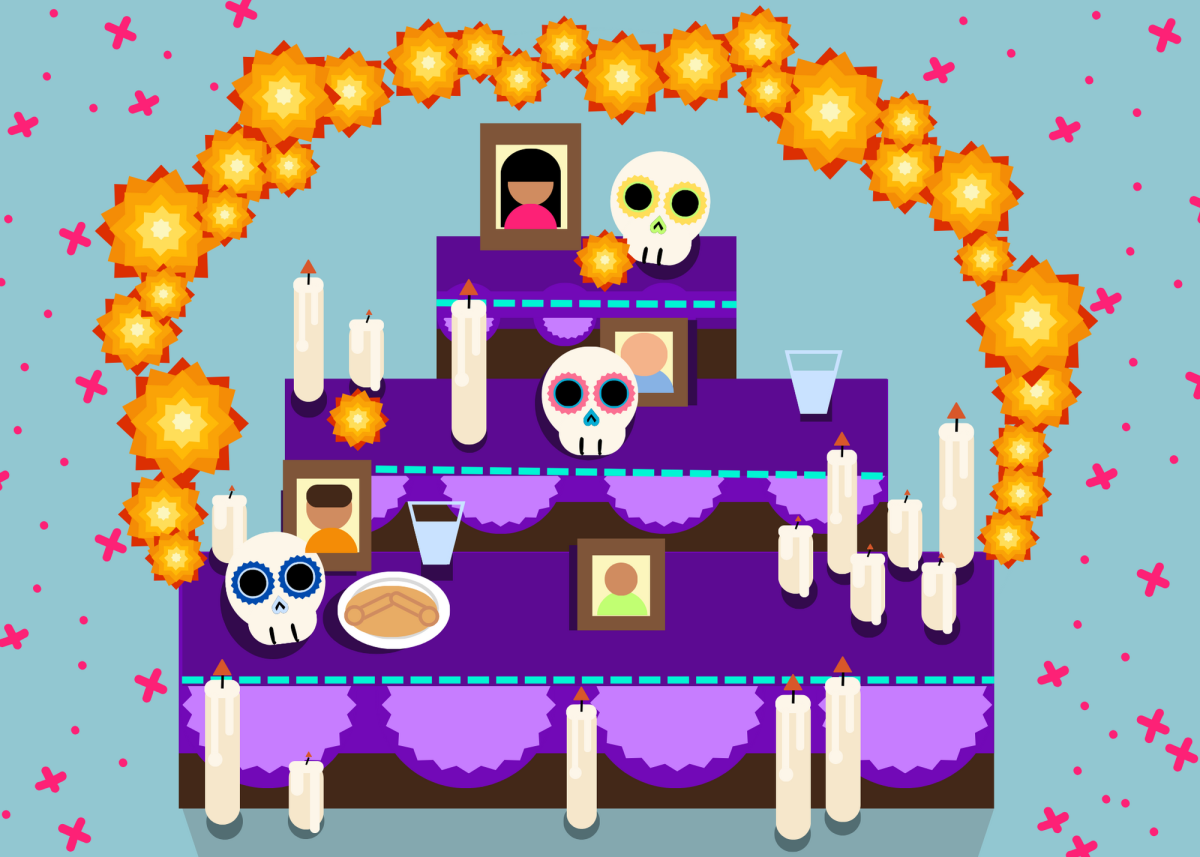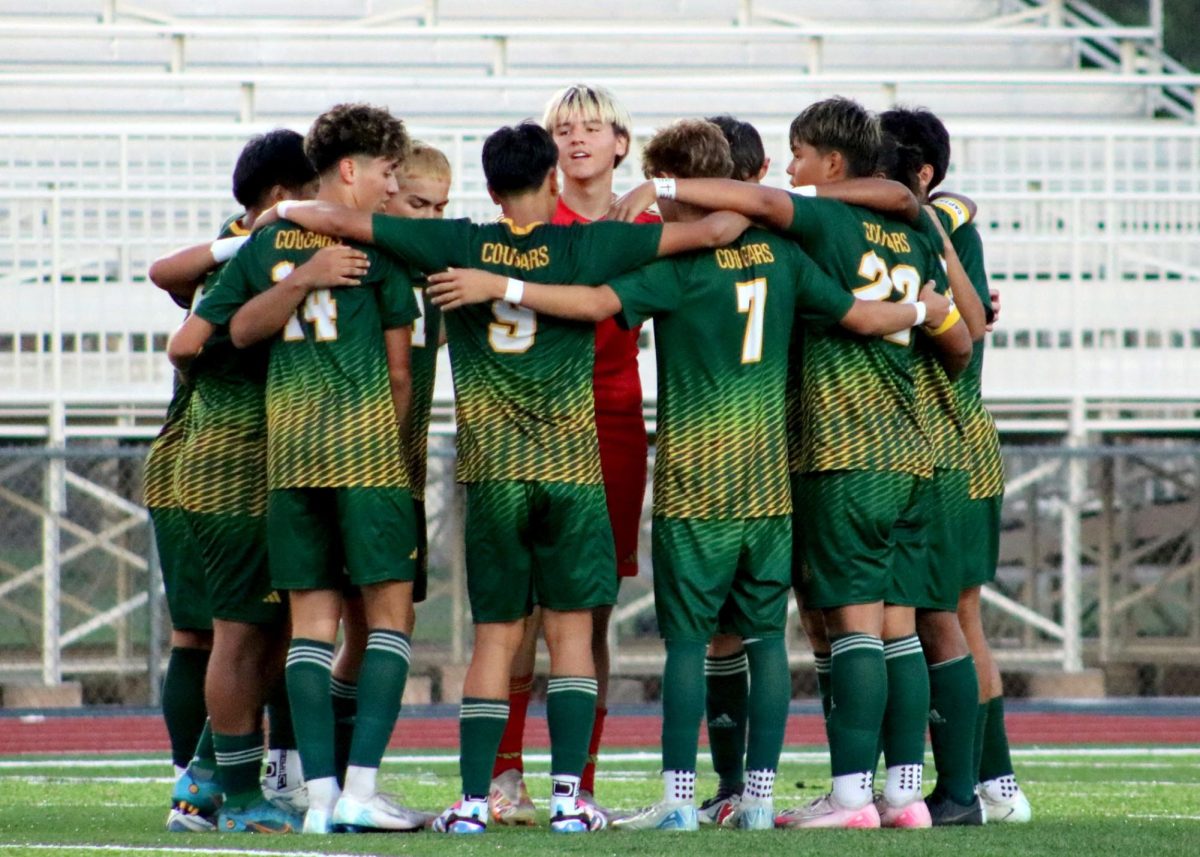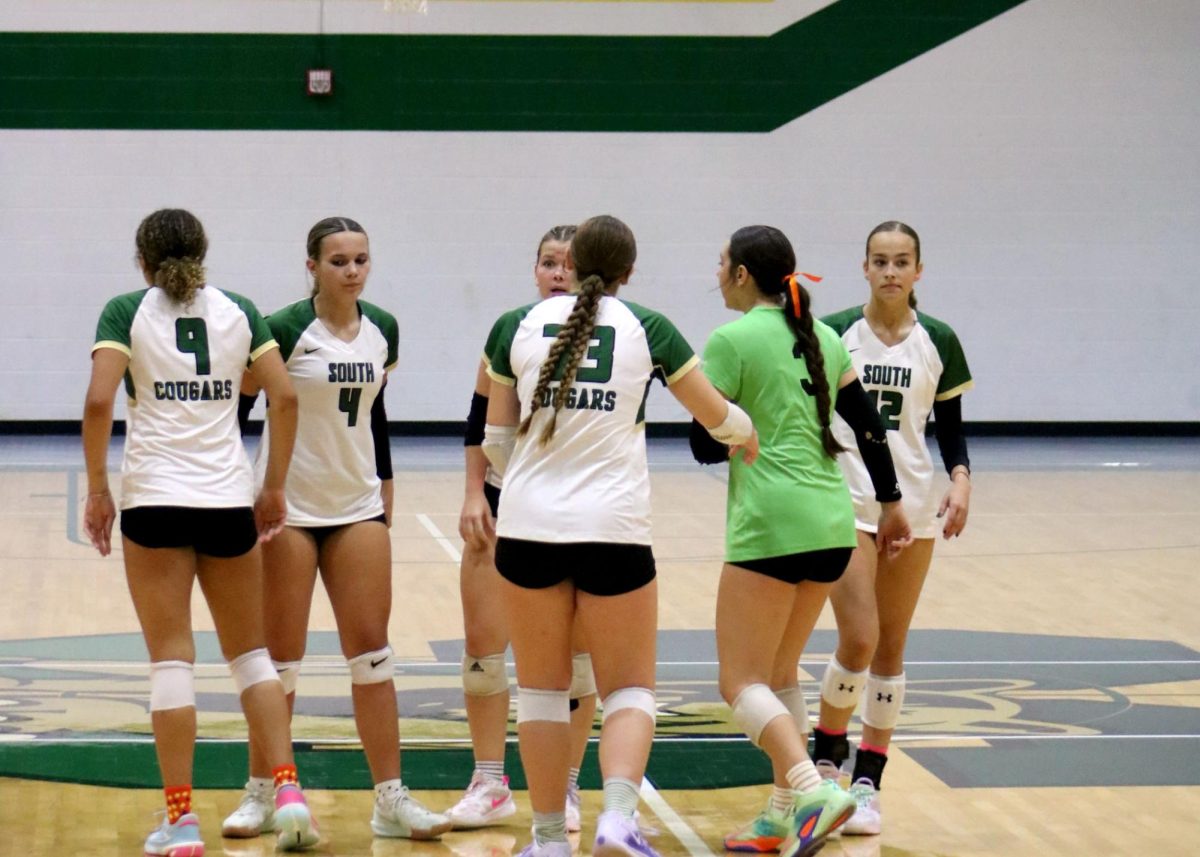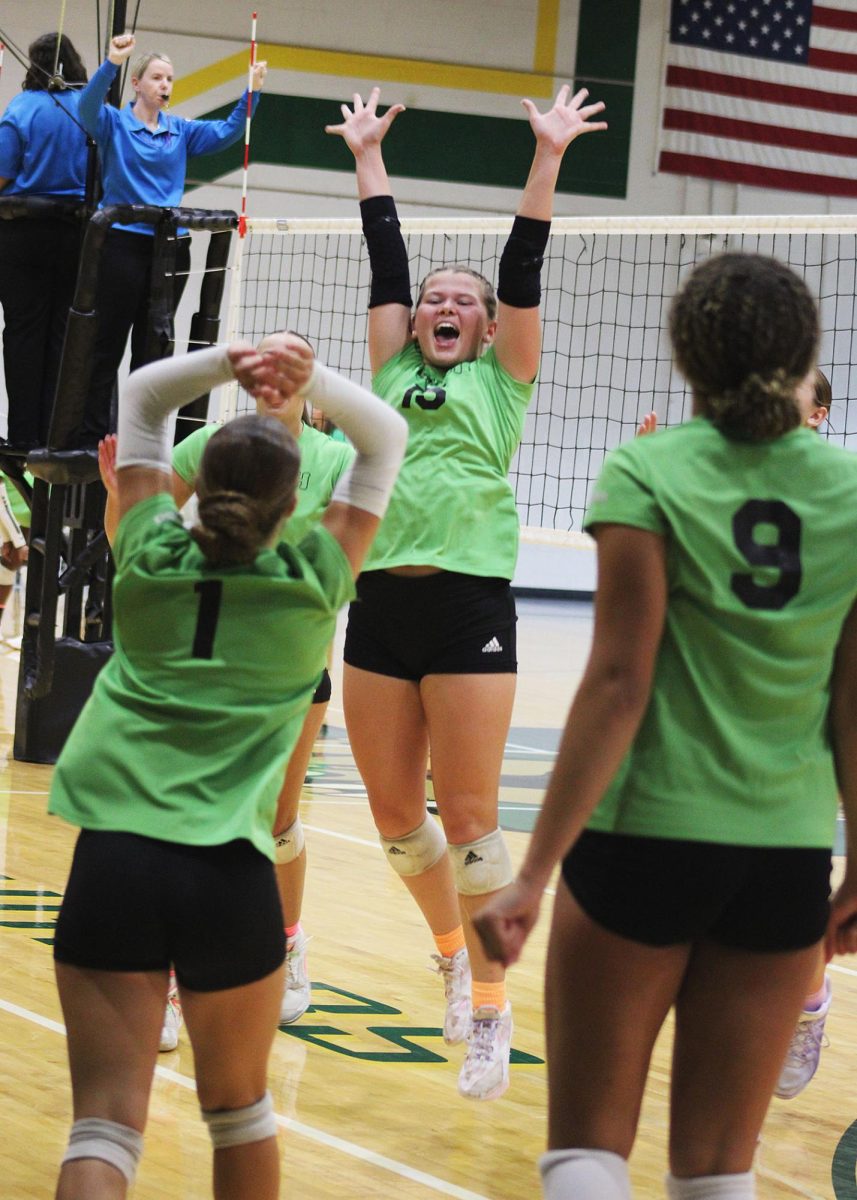Typically celebrated during the first two days of November, Dia de Muertos (translated to Day of the Dead) is a Spanish holiday, mainly observed in Mexico. The day commemorates those who have passed. The tradition begins on Nov. 1, and ends by Nov. 2
Altars, also known as ofrendas, are built by the family to honor the spirits of loved ones. There are a variety of ways to assemble an altar, but there are a few characteristics that are common in a majority of them. The most common are photographs of the loved one, and the candles that line around the altars. Food and drinks are also placed upon the ofrendas to please the spirit and welcome them back into the home. Marigolds, known for their potent scent, are used to help guide loved ones back to their families. But these altars don’t need to be extravagant, they can be modified to fit anyone’s lifestyle.
“It makes me happy that we honor our loved ones. Although it does make me sad to think about them. I wish we could honor them as living relatives, not dead ones. Overall, I really like doing it every year.” Natalia Silvestre (‘25) said.
Day of the Dead parades are held worldwide to demonstrate the love and respect for the dead, the famous or just family. These parades consist of calaveras, which are skulls that can be edible or made out of paper, used to either eat or decorate around homes and businesses. The calaveras can also be used as inspiration to be painted on people’s faces to encourage festivities. Performers will also wear noisemakers and shells to use as embellishments and rouse up the crowd for celebration. During the celebration of the parades, people will dance on the streets alongside musical entertainers, and hand crafted floats.
The concept of death is scary, but with these celebrations comes closure and appreciation for those who have passed by including them in the present.

















